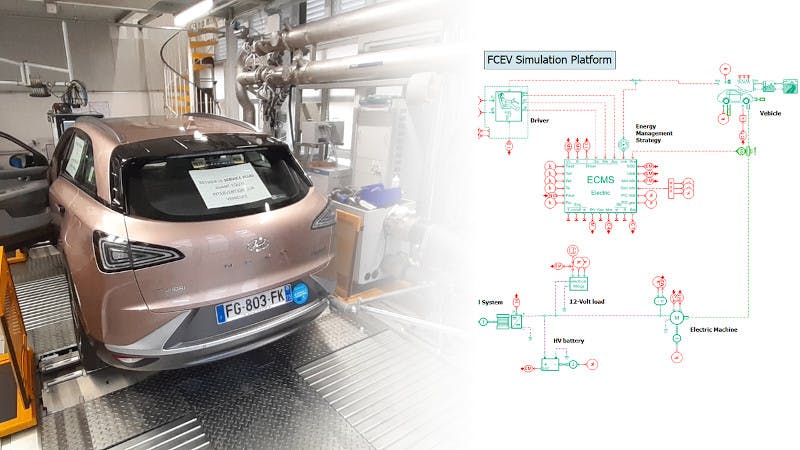In the trend of zero-emission vehicles, a fuel cell is gaining preference as an alternative to battery, especially for commercial vehicles, buses, or passenger cars requiring a long range without repeatedly recharging. However, integrating the stack and the Balance of Plant (BoP) into a vehicle is not straightforward: it involves many interacting physics and subsystems that need to be perfectly combined with optimal control strategies to reach the required levels of performance, the lowest energy consumption while ensuring strong reliability and long lifetime.
In this 30-minute webinar, our Siemens experts and Jules Sery from IFP Energies nouvelles introduce how a multi-physics system simulation-based approach helps to predict and better understand the behavior of the fuel cell integrated with its air and hydrogen supply systems, as well as the water and thermal management systems. We’ll also demonstrate our simulation capabilities showing a comparison of results for hydrogen consumption and fuel cell system behavior with dynamometer test bench data on a Hyundai Nexo. We’ll explain how off-the-shelves models and application-oriented tools make it possible to simulate the fuel cell stack and the BoP from the concept phase, for subsystems and control design, and finally for components integration and control calibration.
Keep a continuous workflow from the concept phase, during subsystems and control design stage and for components integration and control calibration
During this session, we’ll introduce how this model-based design approach helps to make better design decisions in shorter timeframes:
- At concept stage for components pre-sizing, architecture choice, and high-level control strategy design using simple models with limited parameters and fast simulations
- For the subsystems and components design using more accurate models integrating more physics
- During the integration and validation stage using models combing accuracy with fast simulations
Meet the speaker

Benoit Honel
Product Manager Electrification
In his role, Benoit focuses on aligning the Simcenter Amesim product features with the customers accelerating vehicle electrification challenges. He has a master's degree in thermodynamic engineering and has been involved in multi-domain system simulation since 1995.
